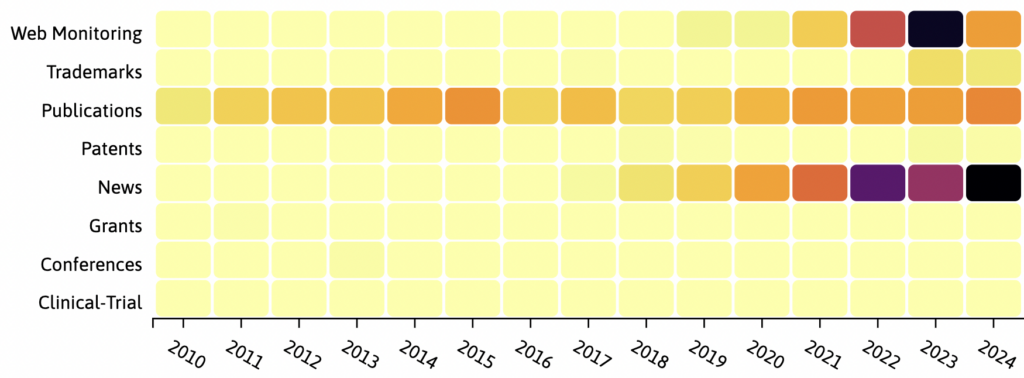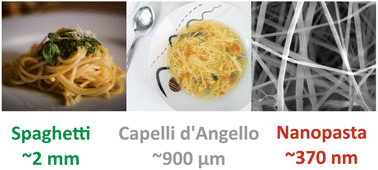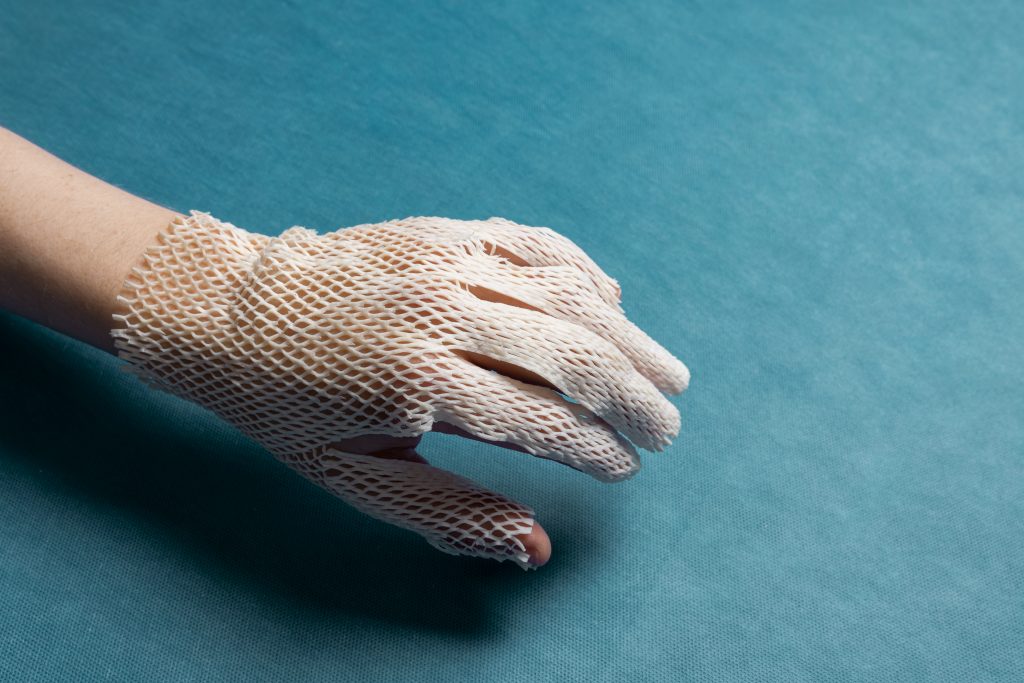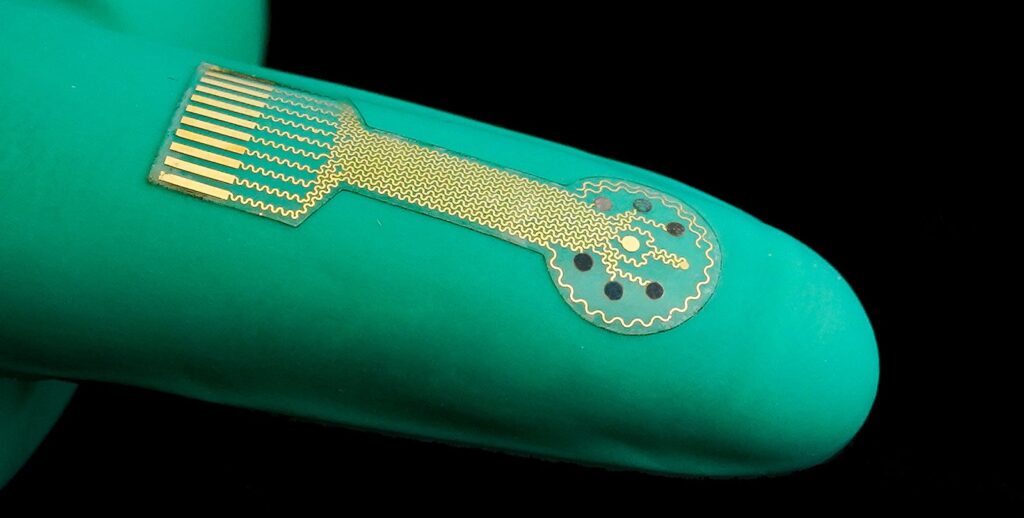Innovation in wound care is undergoing a rapid transformation. Research centers, universities, and emerging companies worldwide are developing revolutionary solutions. These include, for instance, smart bandages and skin-mimicking materials that promise faster and more effective tissue regeneration.
Universities and research labs are at the forefront of these advacements, as shown by Linknovate data. But interesting solutions are also implemented by pioneer companies that enhance innovation in wound treatment.
For this reason, we made an integrated analysis to know more about the latest research and patents in wound healing. This article goes through a selection of the five of the most exciting recent innovations in the field.
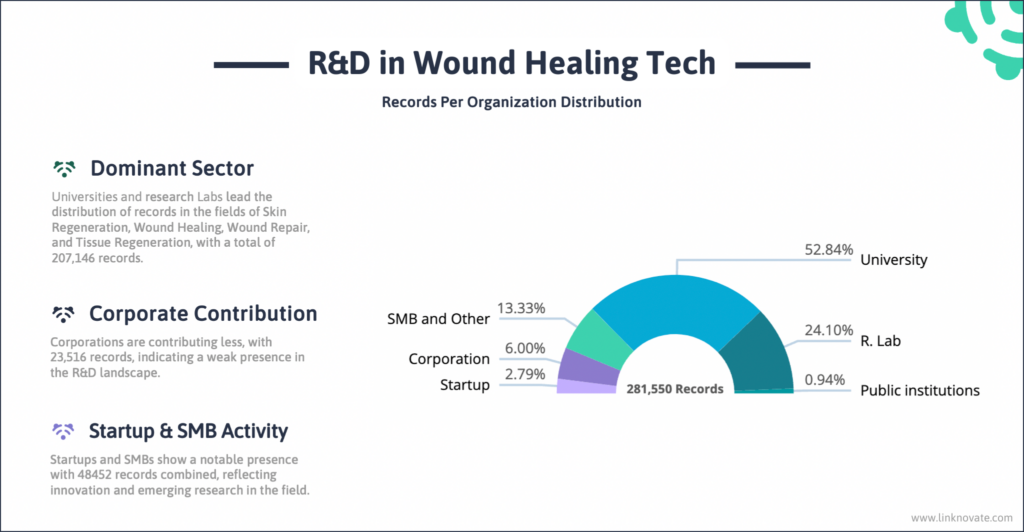
1. Skin-Healing Fungi
A collaboration between the University of Pavia and the Istituto Italiano di Tecnologia has uncovered remarkable properties of mycelium. Mycelium —the root-like structure of fungi—t has been found to support tissue regeneration, enhance collagen production, and accelerate wound healing. Completely biodegradable and biocompatible, this fungal innovation has the potential to transform chronic wound care and sustainable medicine.
2. The World’s Thinnest “Spaghetti” Enhancing Wound Care
Researchers at the University of London have developed starch-based nanofibers just 370 nanometers thick—roughly two-hundredths the width of a human hair.
Dubbed Nanopasta, these ultra-thin, breathable mats act as a barrier against bacteria while allowing moisture to pass through, making them ideal for wound dressings. Even more astonishingly, they’re made from ordinary white flour, making them biodegradable and eco-friendly.
3. 3D-Bioprinted Living Bandages
Companies like Xeltis and Aspect Biosystems are leveraging advanced 3D bioprinting technology to create innovative “living bandages” infused with human cells. These bioengineered implants not only promote the regeneration of tissues and blood vessels but also actively release growth factors to accelerate healing at a cellular level.
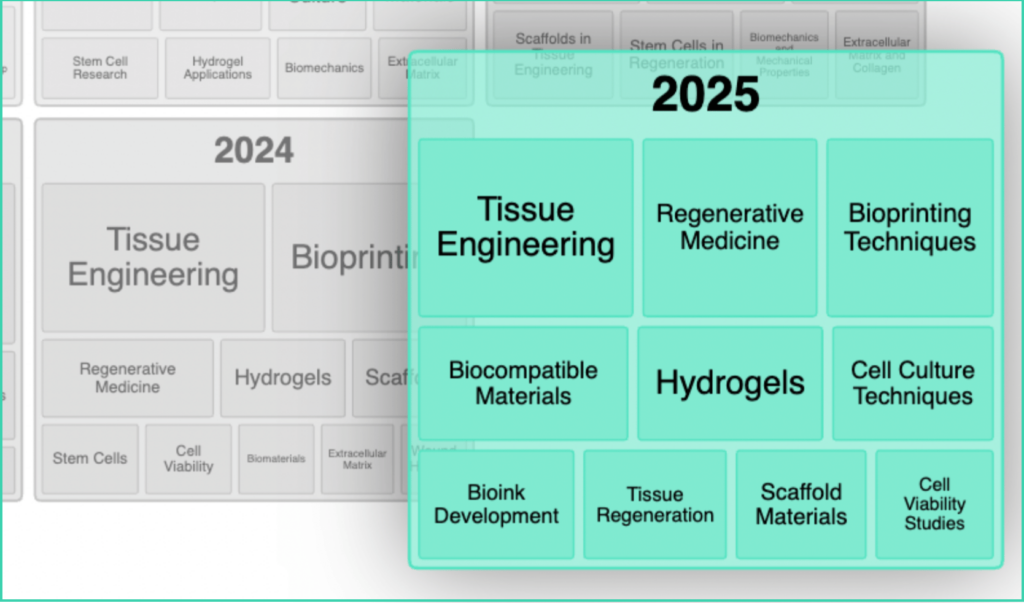
Unlike traditional wound care methods, these personalized, cell-based treatments seamlessly integrate with a patient’s skin and organs. This significantly reduces the risk of infection, rejection, and scarring. This approach has the potential to revolutionize regenerative medicine, offering faster recovery and improved outcomes for patients with chronic wounds, burns, or surgical injuries.
4. Fish Skin for Tissue Regeneration
Kerecis, a pioneer company in the use of intact fish skin and fatty acids for cellular therapy and regenerative medicine, has developed innovative smart bandages that promote tissue regeneration in trauma and chronic wounds, including burns and diabetic ulcers.
Their patented technology utilizes decellularized fish skin regenerate skin in trauma cases and chronic wounds like burns and diabetic ulcers. Using the natural properties of fish skin to speed up healing, it helps reduce inflammation, and minimize scarring. Basically, an artificial skin made from fish cells.
5. Smart Electronic Bandages
Researchers at USC and Caltech are developing advanced electronic bandages to improve chronic wound monitoring and healing. These smart bandages can track healing, detect infections, and deliver treatments such as controlled drug release and electrical stimulation.
A proof-of-concept study in animal models has shown promising results. Additionaly, a recent Nature Materials review outlines the next steps for regulatory approval and commercialization. The team is refining the technology with bioelectronic materials, hydrogels, and sensors to detect key biomarkers, aiming to revolutionize chronic wound care.
The Future of Wound Care
In conclusion, with the emergence of innovations like those described here, the future of wound healing innovations looks promising. These cutting-edge solutions not only enhance healing, but also emphasize biocompatibility and better patient care. As research and industry collaborations continue, we can expect more breakthroughs to redefine how we treat wounds and promote recovery.
To discover more about how Linknovate can help you find the key innovations and players in sectors such as medicine, biotech, and biomedical research, book a demo with one of our experts or start a free trial to play with our platform solo.




